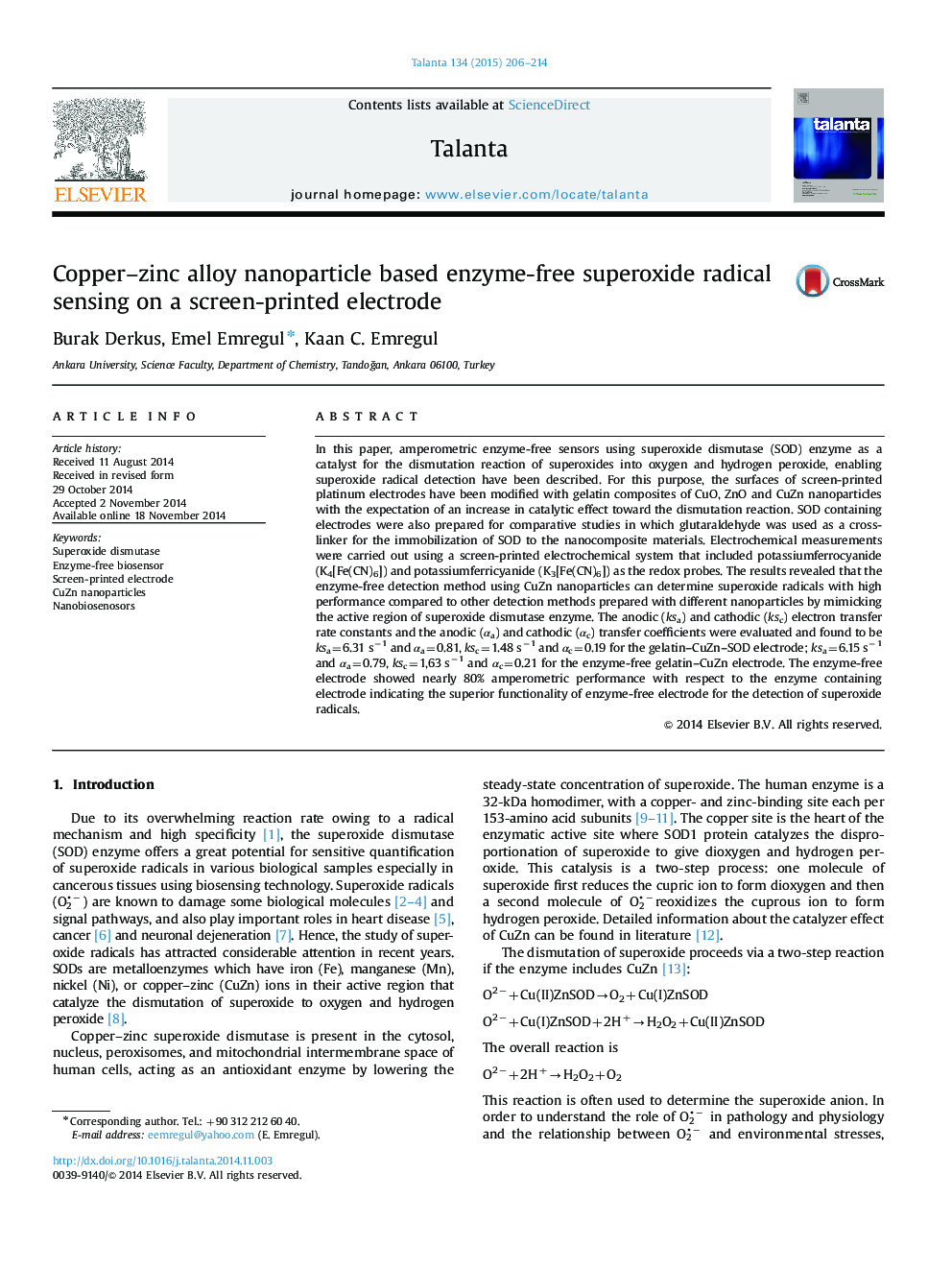| کد مقاله | کد نشریه | سال انتشار | مقاله انگلیسی | نسخه تمام متن |
|---|---|---|---|---|
| 1244070 | 1495801 | 2015 | 9 صفحه PDF | دانلود رایگان |
• A novel enzyme-free sensor for the sensitive detection of superoxide radical was developed.
• CuZn alloy nanoparticles could effectively catalyz the dismutation reaction.
• The designed sensor could be reasonably applied in the clinical determination of superoxide radicals in a cancerous tissue.
In this paper, amperometric enzyme-free sensors using superoxide dismutase (SOD) enzyme as a catalyst for the dismutation reaction of superoxides into oxygen and hydrogen peroxide, enabling superoxide radical detection have been described. For this purpose, the surfaces of screen-printed platinum electrodes have been modified with gelatin composites of CuO, ZnO and CuZn nanoparticles with the expectation of an increase in catalytic effect toward the dismutation reaction. SOD containing electrodes were also prepared for comparative studies in which glutaraldehyde was used as a cross-linker for the immobilization of SOD to the nanocomposite materials. Electrochemical measurements were carried out using a screen-printed electrochemical system that included potassiumferrocyanide (K4[Fe(CN)6]) and potassiumferricyanide (K3[Fe(CN)6]) as the redox probes. The results revealed that the enzyme-free detection method using CuZn nanoparticles can determine superoxide radicals with high performance compared to other detection methods prepared with different nanoparticles by mimicking the active region of superoxide dismutase enzyme. The anodic (ksa) and cathodic (ksc) electron transfer rate constants and the anodic (αa) and cathodic (αc) transfer coefficients were evaluated and found to be ksa=6.31 s−1 and αa=0.81, ksc=1.48 s−1 and αc=0.19 for the gelatin–CuZn–SOD electrode; ksa=6.15 s−1 and αa=0.79, ksc=1,63 s−1 and αc=0.21 for the enzyme-free gelatin–CuZn electrode. The enzyme-free electrode showed nearly 80% amperometric performance with respect to the enzyme containing electrode indicating the superior functionality of enzyme-free electrode for the detection of superoxide radicals.
Figure optionsDownload as PowerPoint slide
Journal: Talanta - Volume 134, 1 March 2015, Pages 206–214
